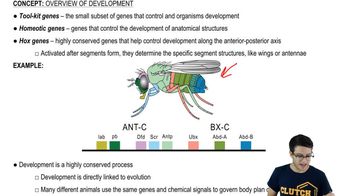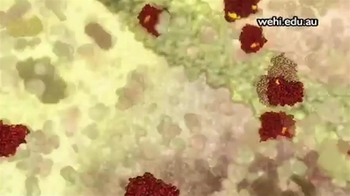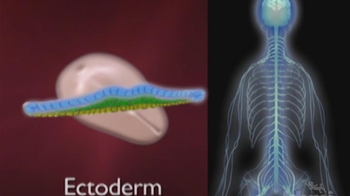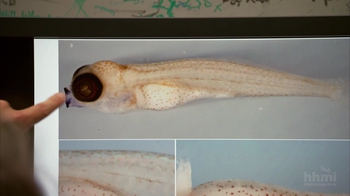Table of contents
- 1. Introduction to Biology2h 42m
- 2. Chemistry3h 40m
- 3. Water1h 26m
- 4. Biomolecules2h 23m
- 5. Cell Components2h 26m
- 6. The Membrane2h 31m
- 7. Energy and Metabolism2h 0m
- 8. Respiration2h 40m
- 9. Photosynthesis2h 49m
- 10. Cell Signaling59m
- 11. Cell Division2h 47m
- 12. Meiosis2h 0m
- 13. Mendelian Genetics4h 44m
- Introduction to Mendel's Experiments7m
- Genotype vs. Phenotype17m
- Punnett Squares13m
- Mendel's Experiments26m
- Mendel's Laws18m
- Monohybrid Crosses19m
- Test Crosses14m
- Dihybrid Crosses20m
- Punnett Square Probability26m
- Incomplete Dominance vs. Codominance20m
- Epistasis7m
- Non-Mendelian Genetics12m
- Pedigrees6m
- Autosomal Inheritance21m
- Sex-Linked Inheritance43m
- X-Inactivation9m
- 14. DNA Synthesis2h 27m
- 15. Gene Expression3h 20m
- 16. Regulation of Expression3h 31m
- Introduction to Regulation of Gene Expression13m
- Prokaryotic Gene Regulation via Operons27m
- The Lac Operon21m
- Glucose's Impact on Lac Operon25m
- The Trp Operon20m
- Review of the Lac Operon & Trp Operon11m
- Introduction to Eukaryotic Gene Regulation9m
- Eukaryotic Chromatin Modifications16m
- Eukaryotic Transcriptional Control22m
- Eukaryotic Post-Transcriptional Regulation28m
- Eukaryotic Post-Translational Regulation13m
- 17. Viruses37m
- 18. Biotechnology2h 58m
- 19. Genomics17m
- 20. Development1h 5m
- 21. Evolution3h 1m
- 22. Evolution of Populations3h 52m
- 23. Speciation1h 37m
- 24. History of Life on Earth2h 6m
- 25. Phylogeny2h 31m
- 26. Prokaryotes4h 59m
- 27. Protists1h 12m
- 28. Plants1h 22m
- 29. Fungi36m
- 30. Overview of Animals34m
- 31. Invertebrates1h 2m
- 32. Vertebrates50m
- 33. Plant Anatomy1h 3m
- 34. Vascular Plant Transport1h 2m
- 35. Soil37m
- 36. Plant Reproduction47m
- 37. Plant Sensation and Response1h 9m
- 38. Animal Form and Function1h 19m
- 39. Digestive System1h 10m
- 40. Circulatory System1h 57m
- 41. Immune System1h 12m
- 42. Osmoregulation and Excretion50m
- 43. Endocrine System1h 4m
- 44. Animal Reproduction1h 2m
- 45. Nervous System1h 55m
- 46. Sensory Systems46m
- 47. Muscle Systems23m
- 48. Ecology3h 11m
- Introduction to Ecology20m
- Biogeography14m
- Earth's Climate Patterns50m
- Introduction to Terrestrial Biomes10m
- Terrestrial Biomes: Near Equator13m
- Terrestrial Biomes: Temperate Regions10m
- Terrestrial Biomes: Northern Regions15m
- Introduction to Aquatic Biomes27m
- Freshwater Aquatic Biomes14m
- Marine Aquatic Biomes13m
- 49. Animal Behavior28m
- 50. Population Ecology3h 41m
- Introduction to Population Ecology28m
- Population Sampling Methods23m
- Life History12m
- Population Demography17m
- Factors Limiting Population Growth14m
- Introduction to Population Growth Models22m
- Linear Population Growth6m
- Exponential Population Growth29m
- Logistic Population Growth32m
- r/K Selection10m
- The Human Population22m
- 51. Community Ecology2h 46m
- Introduction to Community Ecology2m
- Introduction to Community Interactions9m
- Community Interactions: Competition (-/-)38m
- Community Interactions: Exploitation (+/-)23m
- Community Interactions: Mutualism (+/+) & Commensalism (+/0)9m
- Community Structure35m
- Community Dynamics26m
- Geographic Impact on Communities21m
- 52. Ecosystems2h 36m
- 53. Conservation Biology24m
20. Development
Developmental Biology
Problem 6`
Textbook Question
Scientists have recently developed a process by which a skin cell from a human can be triggered to develop into a human heart muscle cell. This is possible because . a. most cells in the human body contain the genetic instructions for making all types of human cells; b. a skin cell is produced when all genes in the cell are expressed; turning off some genes in the cell results in a heart cell; c. scientists can add new genes to old cells to make them take different forms; d. a skin cell expresses only recessive alleles, so it can be triggered to produce dominant heart cell alleles; e. it is easy to mutate the genes in skin cells to produce the alleles required for other cell types
 Verified step by step guidance
Verified step by step guidance1
Understand the concept of cellular differentiation: Cellular differentiation is the process by which a less specialized cell becomes a more specialized cell type. In humans, most cells contain the same genetic material (DNA), but different cell types express different sets of genes to perform specific functions.
Recognize that all human cells (except red blood cells) contain the complete set of genetic instructions (the genome). This means that a skin cell has the genetic potential to become any other type of cell, including a heart muscle cell, if the correct genes are activated or suppressed.
Learn about induced pluripotent stem cells (iPSCs): Scientists can reprogram specialized cells, like skin cells, into a pluripotent state where they behave like stem cells. These iPSCs can then be directed to differentiate into specific cell types, such as heart muscle cells, by controlling gene expression.
Evaluate the options provided in the question: Option (a) aligns with the concept that most cells contain the genetic instructions for making all types of human cells. This is the basis for reprogramming skin cells into heart muscle cells.
Understand why the other options are incorrect: For example, option (b) incorrectly suggests that turning off genes in a skin cell directly results in a heart cell, which oversimplifies the process. Option (c) implies adding new genes, which is not necessary since the genetic instructions are already present. Option (d) and (e) involve misconceptions about alleles and mutations that are not relevant to this process.
 Verified video answer for a similar problem:
Verified video answer for a similar problem:This video solution was recommended by our tutors as helpful for the problem above
Video duration:
48sPlay a video:
Was this helpful?
Key Concepts
Here are the essential concepts you must grasp in order to answer the question correctly.
Cell Differentiation
Cell differentiation is the process by which a less specialized cell becomes a more specialized cell type. In multicellular organisms, this process allows for the development of various cell types, such as muscle cells, nerve cells, and skin cells, each with distinct functions. Understanding how cells can change their identity is crucial for grasping how a skin cell can be transformed into a heart muscle cell.
Recommended video:
Guided course

Cell Division and Differentiation
Gene Expression
Gene expression refers to the process by which information from a gene is used to synthesize functional gene products, typically proteins. Different cell types express different sets of genes, which determines their specific functions. In the context of the question, manipulating gene expression in a skin cell can enable it to adopt the characteristics of a heart muscle cell.
Recommended video:
Guided course

Introduction to Regulation of Gene Expression
Stem Cells and Induced Pluripotent Stem Cells (iPSCs)
Stem cells are undifferentiated cells that have the potential to develop into various cell types. Induced pluripotent stem cells (iPSCs) are a type of stem cell created by reprogramming adult cells, such as skin cells, to revert to a pluripotent state. This technology allows scientists to generate specific cell types, like heart muscle cells, from differentiated cells, highlighting the potential for regenerative medicine.
Recommended video:
Guided course

Cell Junctions

 5:28m
5:28mWatch next
Master Cell Division and Differentiation with a bite sized video explanation from Jason
Start learningRelated Videos
Related Practice



























![Drosophila Embryogenesis - Anterior/Posterior Patterning [English Captions]](https://img.youtube.com/vi/ZOzKXrOGtgw/mqdefault.jpg)



















